The benefits of emotional pacing in therapy
Harnessing Emotional Pacing for Enhanced Therapeutic Outcomes

Understanding Emotional Pacing in Therapy
Emotional pacing in therapy refers to the strategic regulation and modulation of emotional engagement during treatment, allowing individuals to manage stress, triggers, and emotional responses effectively. This approach is critical for addressing substance abuse, mental health disorders, and various addictions, where emotional dysregulation often poses significant challenges to recovery. This article explores the multifaceted benefits of emotional pacing, highlighting evidence-based therapeutic modalities, the role of physical activity, and practical strategies that help sustain wellness and prevent relapse.
Comprehensive Treatment Services: An Integrated Approach to Recovery
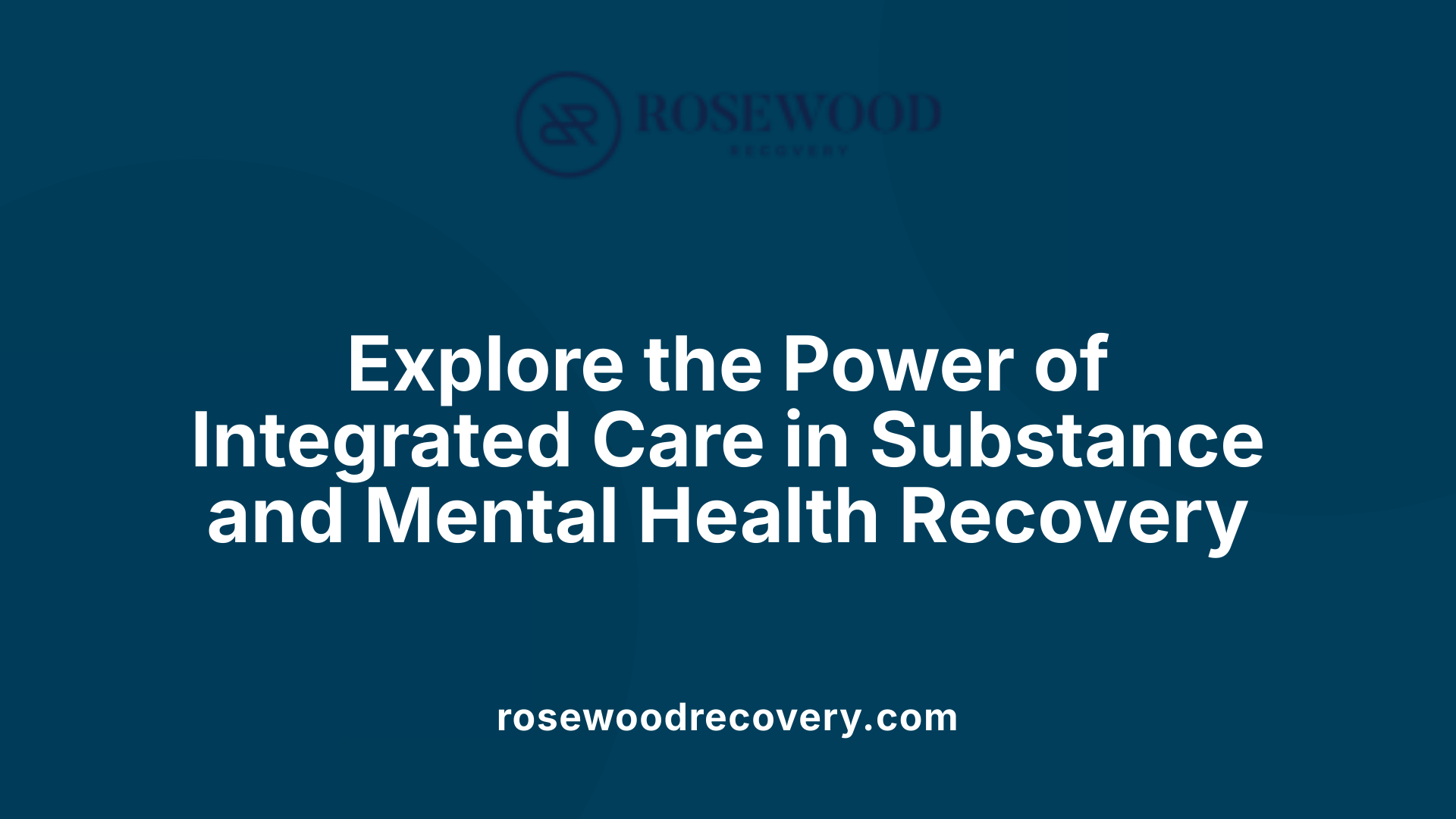
What are comprehensive treatment services for substance abuse and mental health issues?
Comprehensive treatment services provide an integrated approach combining medical, psychological, and social supports to help individuals facing substance abuse and mental health challenges. These services cover a range of care levels, including outpatient therapy, inpatient hospitalization, intensive outpatient programs, and partial hospitalization. Each treatment plan is tailored to meet the unique needs of the individual to maximize effectiveness.
Integration of medical and psychological care
Effective comprehensive treatment seamlessly blends medical interventions with psychological therapies. For example, medical care may include doctor-supervised detoxification and medication management, while psychological support involves counseling, cognitive-behavioral therapy (CBT), dialectical behavior therapy (DBT), and acceptance and commitment therapy (ACT). Additionally, behavioral health integration ensures mental health conditions like anxiety and depression are simultaneously addressed alongside substance use disorders. Telehealth and internet-based programs enhance accessibility to these essential services.
Continuity and coordination of care
Continuity of care is vital in long-term recovery. Comprehensive programs coordinate among healthcare providers, therapists, and social service workers to maintain consistent, ongoing support. This can involve transitions between levels of care and follow-up services, such as relapse prevention and motivational interviewing, which help sustain treatment gains. Medicare and other insurance plans contribute by covering necessary inpatient stays, outpatient visits, medications, and preventive screenings, supporting individuals throughout their recovery journey.
Comprehensive treatment services empower individuals by addressing their complex physical, emotional, and social needs in a coordinated and continuous manner, enhancing the chances for sustained recovery and improved quality of life.
Emotional Dysregulation: The Common Thread in Mental Health Challenges
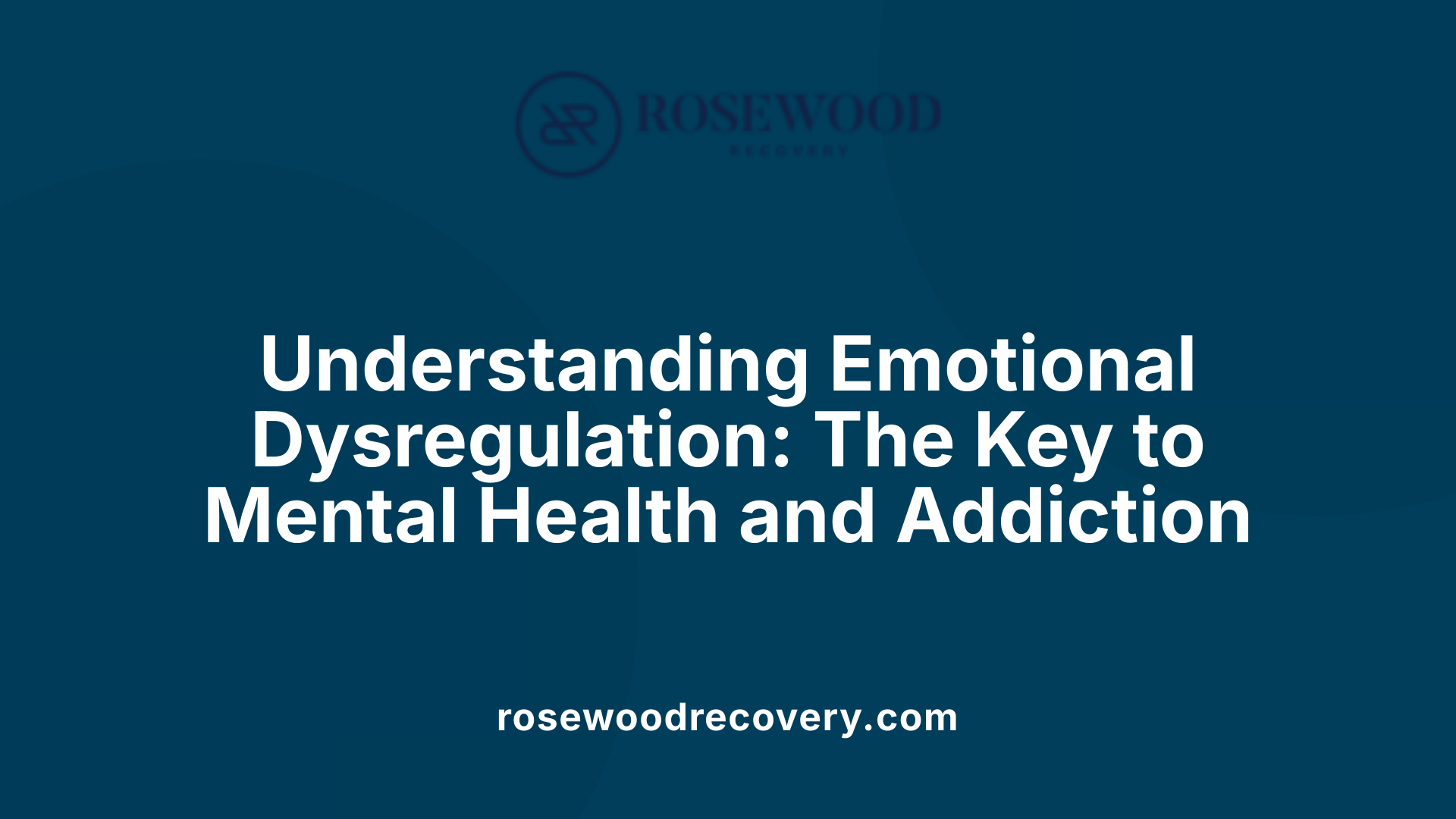
What is Emotional Dysregulation?
Emotional dysregulation refers to difficulties in managing and responding to emotional experiences in a controlled and adaptive way. Individuals struggling with this symptom often find it challenging to modulate their emotional responses, leading to impulsivity, mood swings, and heightened sensitivity to stress.
How Does Emotional Dysregulation Affect Mental Health and Addiction?
Emotional dysregulation is a common factor across various mental health disorders such as anxiety, depression, substance use disorders, and eating pathology. It can intensify symptoms and interfere with recovery by increasing vulnerability to negative moods and impulsive behaviors. Specifically, in addiction, emotional dysregulation contributes to the cycle of substance use by triggering cravings and relapse during stressful or emotionally challenging moments.
What is the Relationship Between Emotional Dysregulation and Health-Promoting Behaviors?
Difficulties in emotional regulation can hinder an individual's ability to adopt behaviors that promote well-being. For example, stress and negative emotions may reduce motivation to engage in exercise, social interaction, or therapy, which are crucial for mental health improvement. Addressing emotional dysregulation through specific therapies and coping strategies is thus essential to encourage positive lifestyle changes and support long-term recovery.
Therapeutic Modalities Promoting Emotional Regulation and Pacing
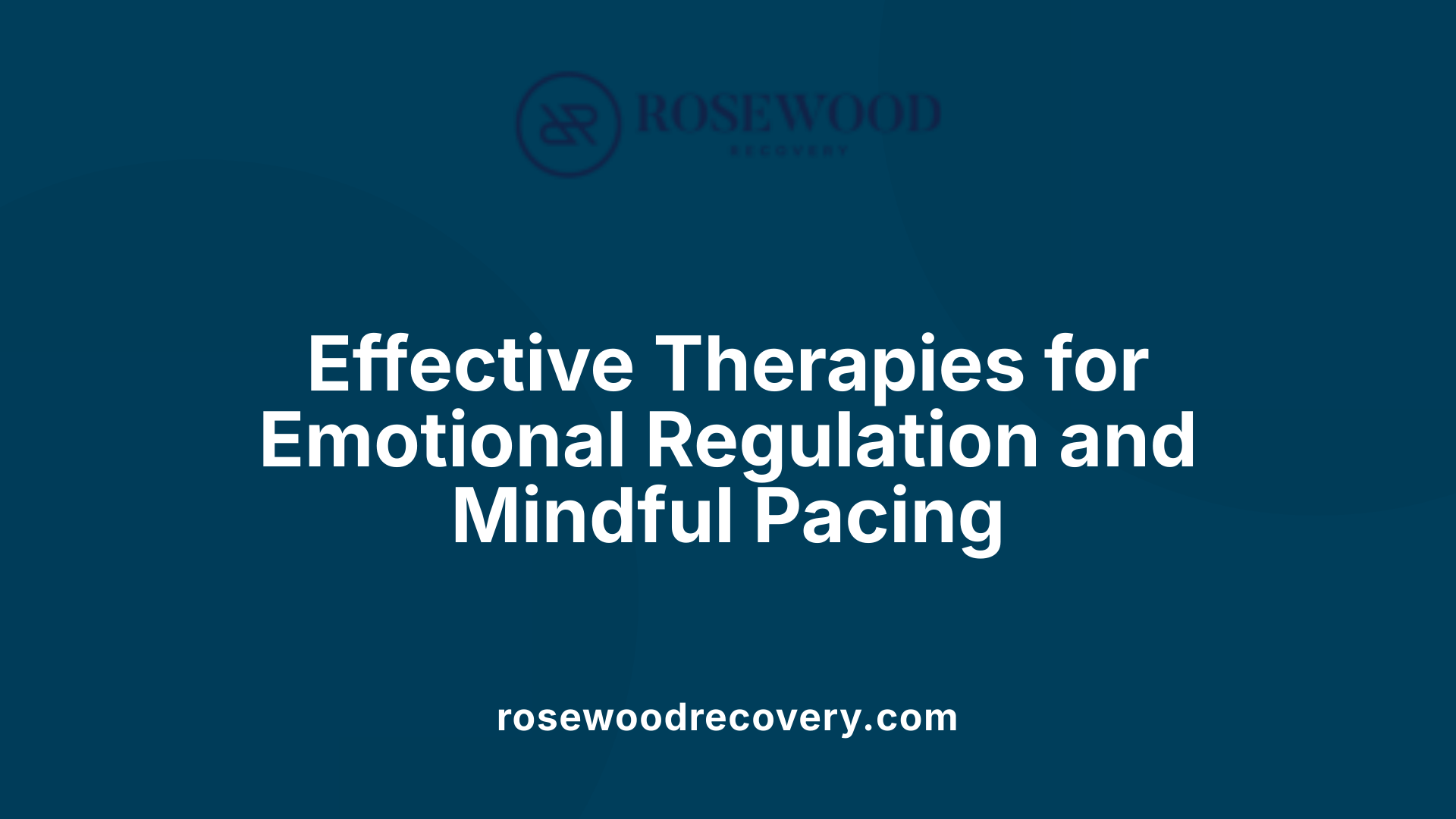
What is Acceptance and Commitment Therapy (ACT) and how does it help?
ACT focuses on accepting internal experiences such as painful thoughts and emotions, helping individuals avoid futile struggles against their feelings. By clarifying personal values, ACT motivates behavioral change and supports psychological flexibility. This approach fosters emotional regulation by encouraging patients to face their experiences mindfully and live in alignment with what matters most to them.
How does Dialectical Behavior Therapy (DBT) support emotional regulation?
DBT is designed to teach practical skills that manage emotional dysregulation. It emphasizes mindfulness, distress tolerance, emotional regulation, and interpersonal effectiveness—skills particularly useful for people facing anxiety, substance misuse, and eating disorders. DBT helps clients develop a balanced emotional pace, enabling them to tolerate distress without being overwhelmed.
In what ways does Cognitive-Behavioral Therapy (CBT) contribute to managing emotions?
CBT involves structured sessions aimed at identifying and challenging negative thought patterns that aggravate emotional distress and substance use. By developing coping strategies and reshaping maladaptive beliefs, CBT empowers patients to improve emotional regulation and responsiveness in therapy. Its goal-oriented nature also supports pacing by breaking down challenges into manageable steps.
What role does Emotion-Focused Therapy (EFT) play in emotional regulation?
EFT centers on recognizing, understanding, and processing emotions to address underlying issues linked to addiction. By bringing emotional awareness to the forefront, it helps individuals confront unresolved feelings that may trigger substance use. This therapy assists patients in pacing their emotional responses consciously, leading to improved coping skills over time.
How does Expressive Arts Therapy aid emotional regulation?
Expressive Arts Therapy engages clients through creative activities such as art, music, or movement, providing alternative ways to express emotions that might be difficult to verbalize. This hands-on approach enhances self-awareness and emotional pacing by allowing individuals to experience and regulate feelings through non-verbal channels. It fosters personal growth by making emotional processing more accessible.
These therapeutic modalities collectively offer versatile strategies for managing emotional dysregulation and fostering healthy pacing in recovery. Integrating acceptance, mindfulness, cognitive restructuring, emotional processing, and creative expression provides a comprehensive approach to support individuals battling addiction and other mental health challenges.
Mindfulness and Meditation: Enhancing Emotional Self-Awareness
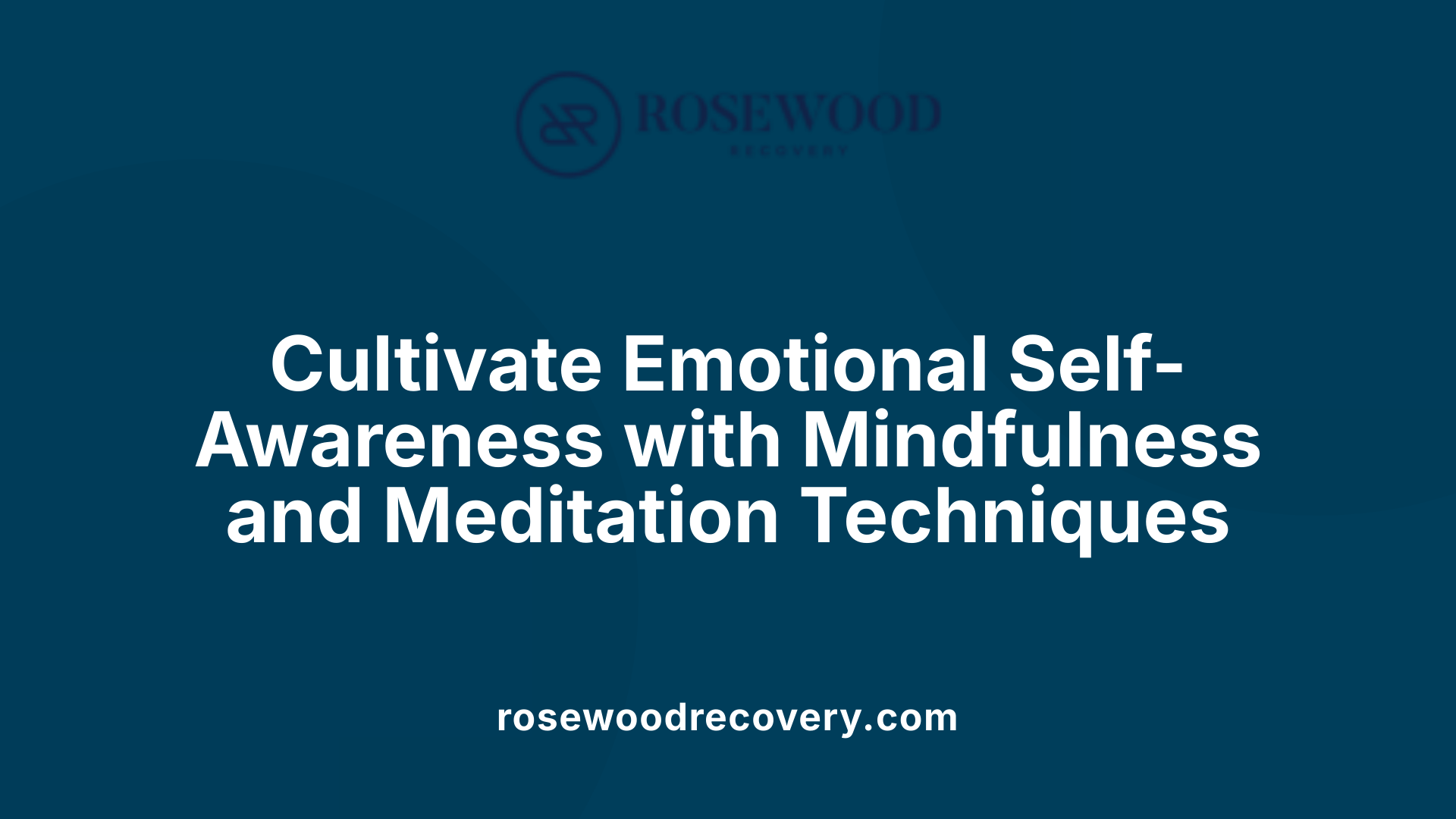
What Are Mindfulness Practices?
Mindfulness involves paying close, non-judgmental attention to the present moment. This often means focusing on bodily sensations, breathing, or the environment around us without trying to change anything. By cultivating this kind of awareness, individuals develop a clearer understanding of their emotional responses as they arise.
How Does Non-Judgmental Observation Help?
Observing thoughts and feelings without judgment allows individuals to recognize emotions without immediately reacting or feeling overwhelmed. This acceptance creates space for healthier emotional processing, reducing impulsiveness and mood swings common in emotional dysregulation.
What Are the Benefits of Meditation?
Even brief daily meditation sessions—lasting as little as 5 to 10 minutes—can enhance emotional regulation. Meditation aids in managing stress, improving focus, and fostering psychological flexibility. These benefits translate into improved quality of life and reduced mental health symptomology.
How Can Mindfulness Reduce Cravings?
Mindfulness and meditation practices have been linked to reductions in substance use cravings. By bringing awareness to the triggers and urges without acting on them, individuals can better resist compulsions to use substances. This skill is particularly valuable in addiction recovery settings, supporting sustained sobriety and emotional balance.
The Role of Pacing Skills in Managing Stress and Emotional Health
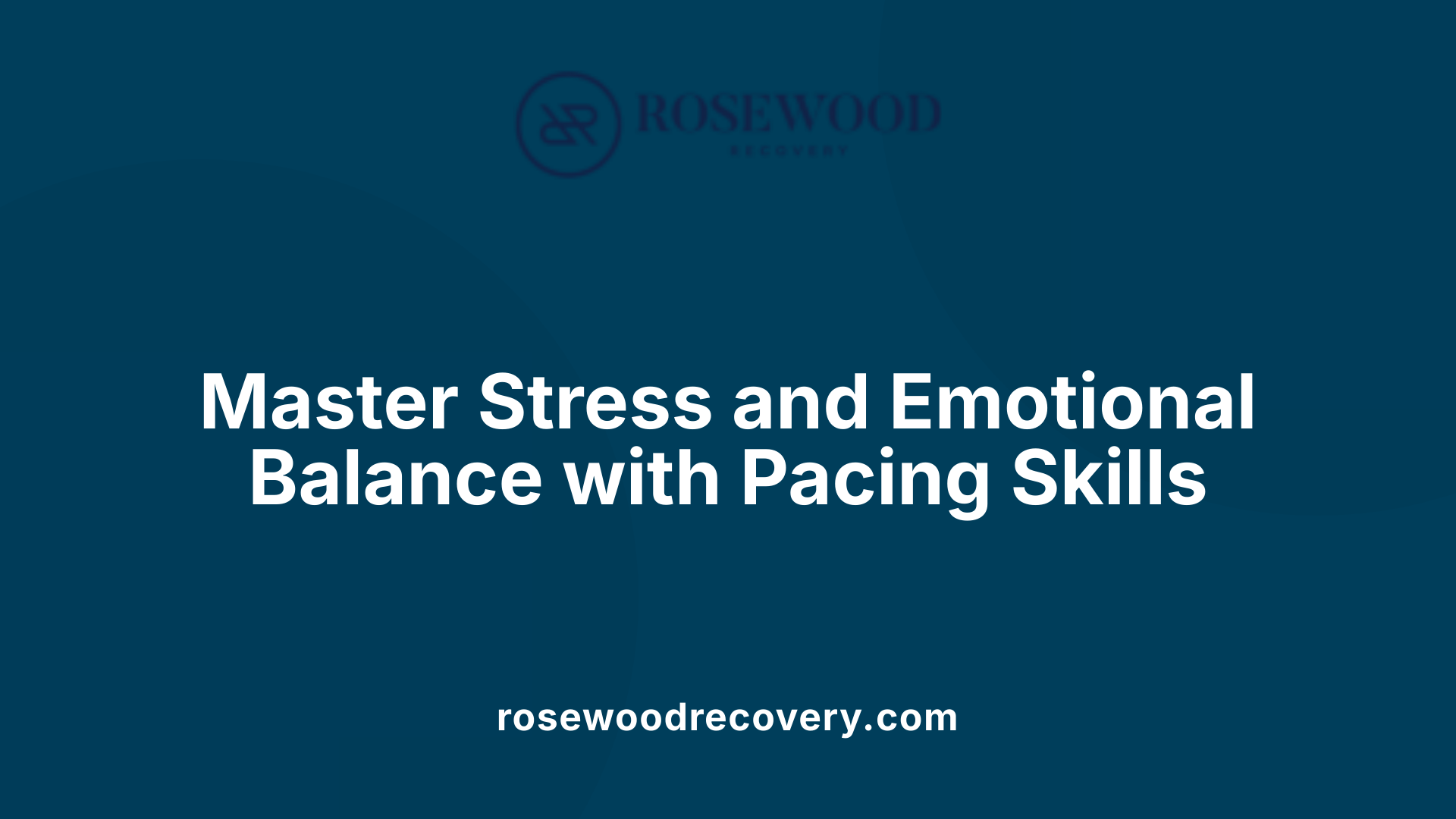
What Are Pacing Skills?
Pacing skills help individuals regulate how they manage activities and stress to maintain balanced energy and emotional well-being. Essentially, pacing teaches us to balance activity and rest to avoid burnout or under-stimulation, supporting sustained productivity and health.
Seven Crucial Pacing Skills
Effective pacing involves several practical strategies:
- Finding the proper speed for each activity – knowing when to slow down or speed up.
- Breaking larger goals into smaller, manageable steps.
- Recognizing when not to engage in certain activities to avoid overload.
- Taking regular breaks to rest and recharge.
- Checking in with oneself regularly to monitor physical and emotional states.
- Setting realistic standards to prevent unnecessary pressure.
- Modulating stimulation levels to keep stress within a manageable range.
Together, these skills empower individuals to sustain mental, physical, social, and emotional health over time.
Stress, Motivation, and Optimal Arousal
Understanding pacing also involves several psychological theories:
- Hans Selye’s General Adaptation Syndrome explains how both extreme inactivity and hyperactivity induce distress, whereas moderate stress, or "eustress," is beneficial.
- Mihaly Csikszentmihalyi’s concept of "flow" describes peak experiences occurring when challenges match skills, promoting growth and satisfaction.
- The Yerkes-Dodson law states that a moderate level of arousal or motivation produces the best performance, highlighting the benefits of maintaining balance.
Maintaining Optimal Arousal Through Pacing
Applying pacing skills enables individuals to stay in a zone of optimal arousal—where stress motivates rather than overwhelms. By adjusting activity levels and engagement, people can enhance their performance, prevent burnout, and support overall emotional regulation and well-being. This balanced approach is especially valuable for those managing high stress, anxiety, or chronic health challenges, promoting a more stable and productive daily life.
Applying the C.L.E.A.R. Principles for Sustained Emotional Balance
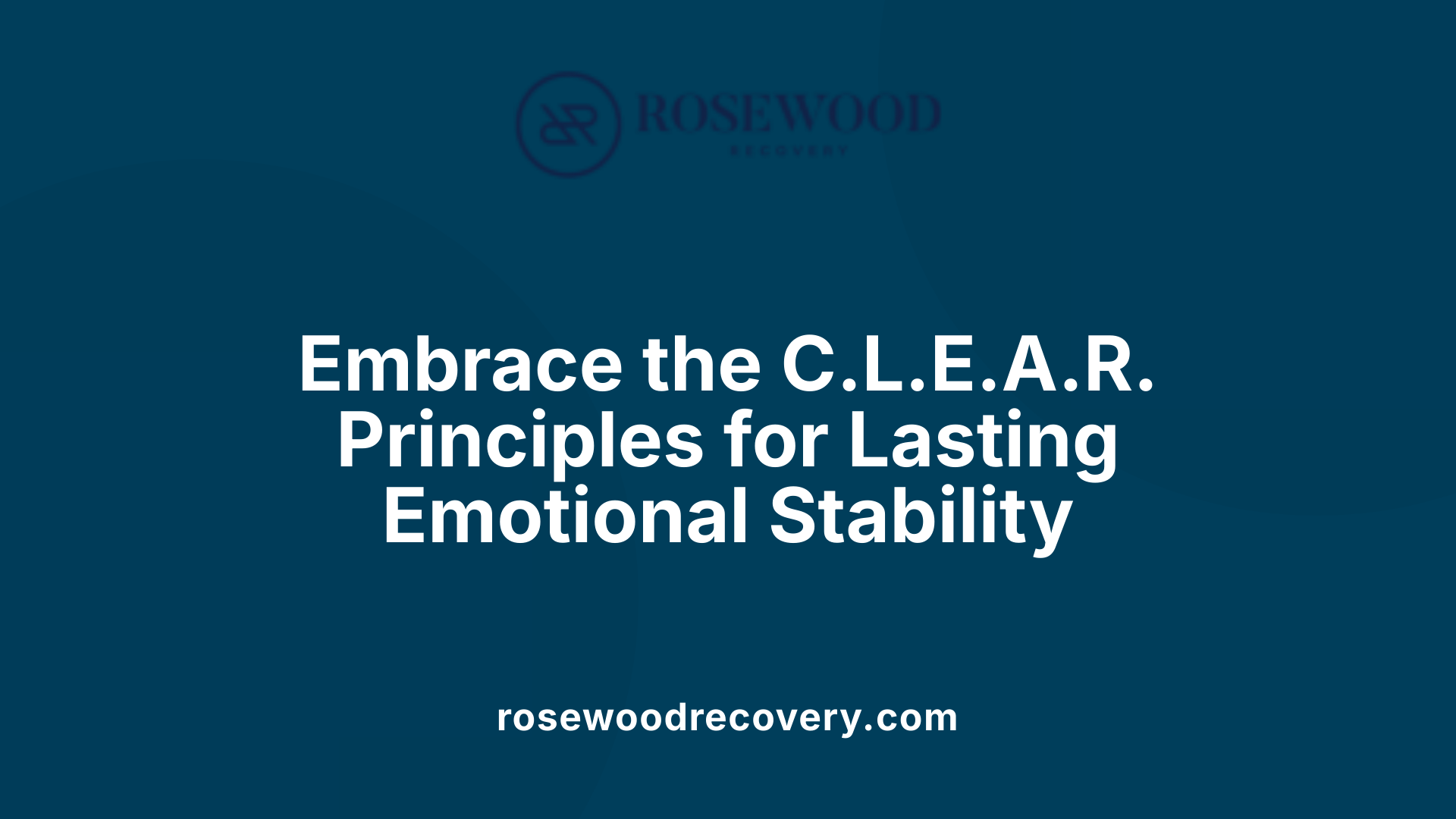
What Are the C.L.E.A.R. Principles?
The C.L.E.A.R. acronym stands for Centered, Lucid, Energetic, Active, and Relaxed—five states that promote a balanced emotional condition. These principles serve as a guide to help individuals maintain a healthy internal environment, fostering emotional regulation and psychological well-being.
How Do These Principles Promote Self-Trust and Effective Pacing?
By striving to remain centered and lucid, individuals enhance self-awareness, enabling them to recognize emotional triggers early. Maintaining an energetic and active state encourages engagement in meaningful activities, supporting motivation and positive mood. Equally important is the relaxed principle, which helps reduce stress and prevent burnout.
Together, these states empower people to pace their activities appropriately—knowing when to push forward and when to take mindful breaks. This balanced approach cultivates trust in oneself, essential for managing emotional responses effectively.
How Do the C.L.E.A.R. Principles Support Emotional Health Maintenance?
Implementing C.L.E.A.R. encourages a dynamic balance rather than rigidity, promoting flexibility to adapt to daily challenges. This equilibrium aids in reducing emotional dysregulation, decreases vulnerability to stress, and supports sustained mental health. Practicing these principles regularly integrates a rhythm of emotional stability that complements therapies like CBT, DBT, and mindfulness, enhancing overall recovery and well-being.
Active Resting: The Mindful Break for Emotional Recovery
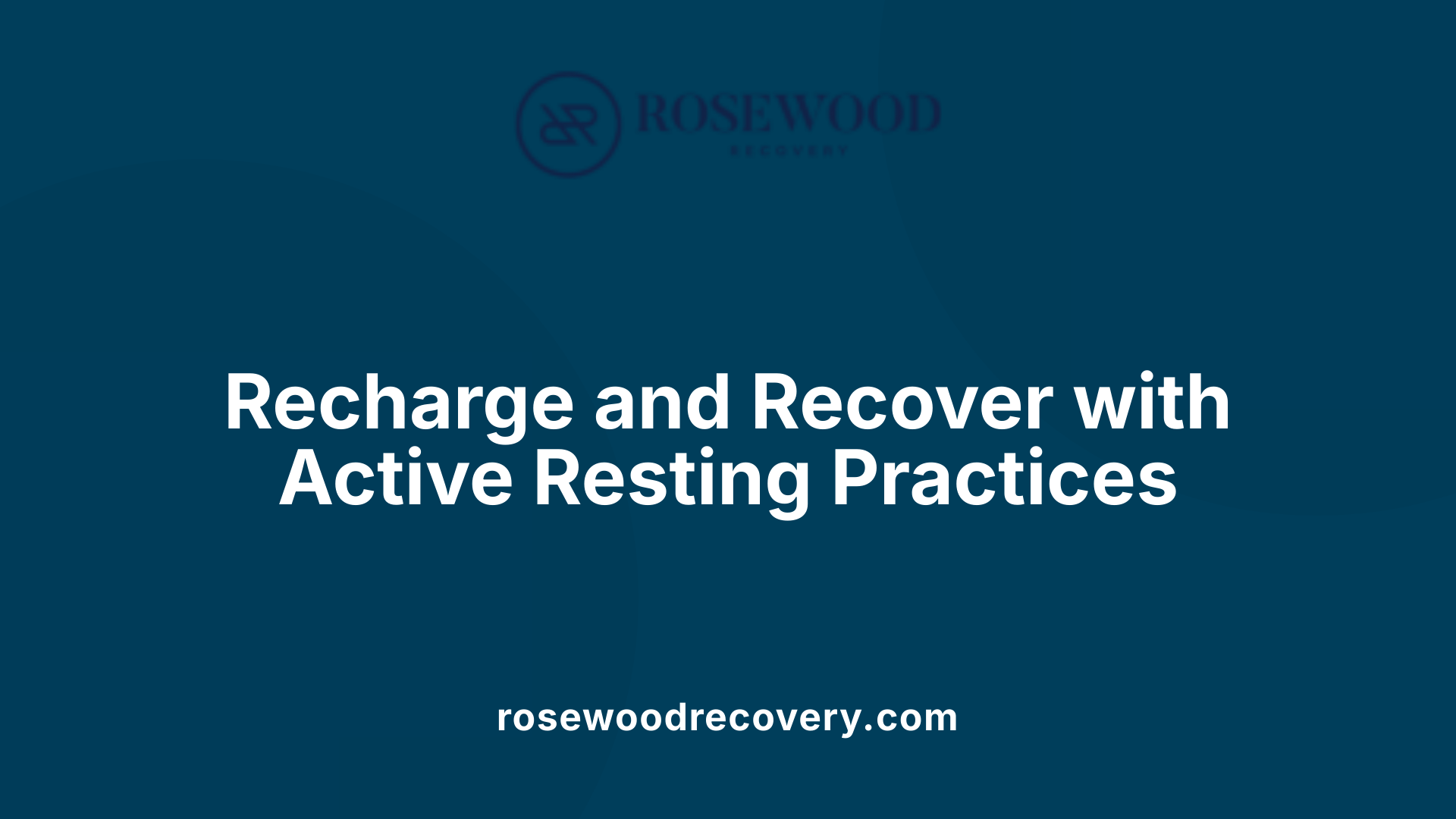
What is Active Resting?
Active resting is a form of rest characterized by taking purposeful, mindful breaks rather than passive downtime. Unlike simply stopping all activities, active resting involves conscious engagement in restful practices designed to refresh both mind and body.
Why Are Purposeful Breaks Important?
Purposeful breaks allow individuals to pause intentionally, fostering greater self-awareness and preventing overexertion. These breaks promote recovery during stressful periods by helping regulate emotions and restore mental energy.
How Does Active Rest Prevent Burnout?
By incorporating active resting strategies, people can interrupt cycles of hypo- or hyperactivity that contribute to emotional distress. This mindful approach helps maintain optimal stress levels, reducing the risk of burnout caused by constant high arousal or extreme inactivity.
In What Ways Does Active Rest Support Recovery from Stress?
Active resting promotes sustainable emotional pacing through intentional relaxation and self-care, enabling individuals to better manage stress. This practice encourages emotional regulation and resilience, which are essential components of recovery and overall well-being.
Integrating Physical Activity in Recovery to Support Emotional Regulation
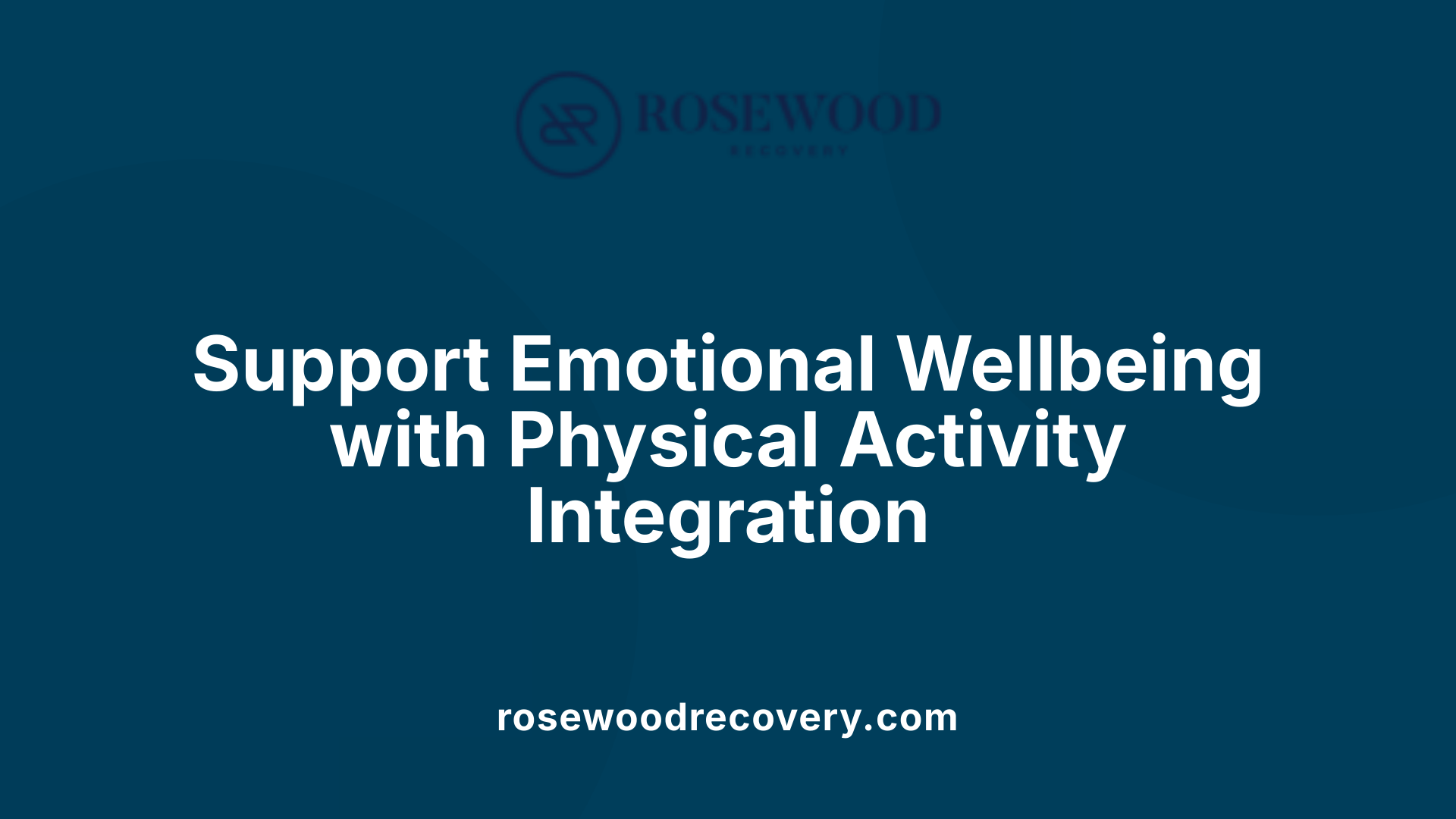
How Does Exercise Benefit Individuals with Substance Use Disorder?
Engaging in physical activity offers multiple benefits for those recovering from substance use disorder (SUD). Exercise has been shown to reduce cravings and promote abstinence, making it an effective component of both prevention and intervention efforts. Beyond helping control substance use, regular physical activity enhances overall quality of life by improving physical fitness and boosting mood.
What Role Does Exercise Play in Mood Improvement and Quality of Life?
Physical activities contribute to reversing negative cycles of depression and anxiety common in individuals with SUD. Participation in exercise programs helps elevate mood through the release of neurotransmitters, which enhances emotional regulation. Additionally, exercise fosters increased self-confidence, better body image, and improved cognitive functions such as working memory, all of which positively affect quality of life.
What Types of Physical Activities Are Beneficial?
Various forms of physical activity can support recovery and emotional well-being. These include:
- Aerobic exercises: Activities like walking, running, or cycling improve cardiovascular health and stimulate mood-enhancing chemicals.
- Strength training: Builds muscle and promotes a sense of accomplishment.
- Mind-body practices: Yoga, Tai Chi, and Qigong enhance mindfulness and emotional balance.
- Outdoor adventure activities: Offer opportunities for social connection and building life skills such as leadership and problem-solving.
How Should Exercise Be Incorporated?
Low to moderate intensity exercises are recommended, particularly during early recovery stages, to maximize adherence and safety. Integrating structured exercise with cognitive-behavioral therapy and motivational strategies enhances behavioral change, sustained engagement, and relapse prevention.
| Benefit Area | Exercise Type | Impact on Recovery |
|---|---|---|
| Reducing cravings | Aerobic and strength | Helps manage withdrawal symptoms and reduces relapse risk |
| Mood enhancement | Mind-body practices | Supports emotional regulation and reduces anxiety |
| Cognitive function | Aerobic and strength | Improves executive function and working memory |
| Social and emotional growth | Outdoor and cooperative | Fosters relationship building and self-efficacy |
Neurobiological Benefits of Exercise in Addiction and Mental Health Treatment
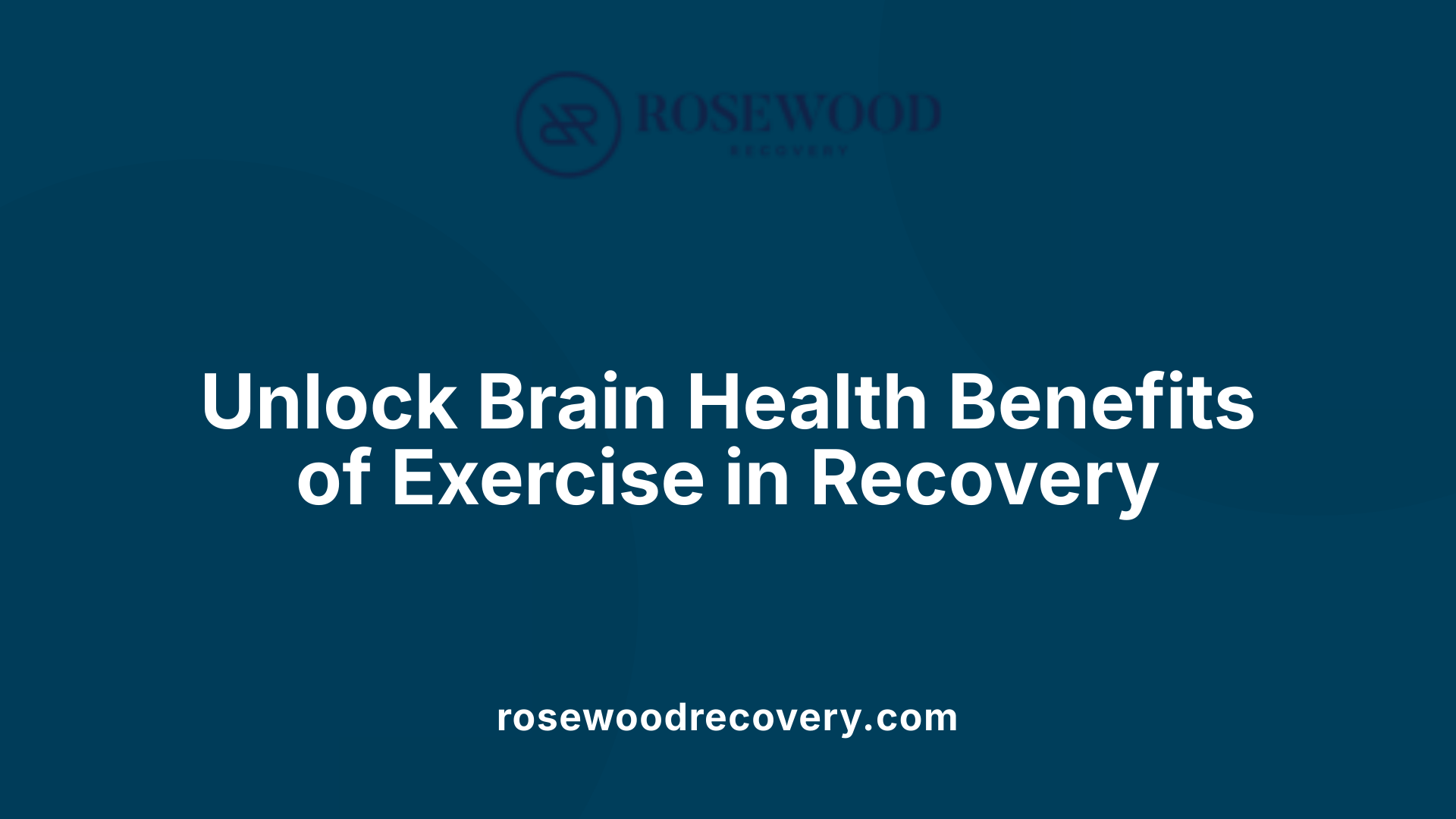
How does exercise stimulate neurotransmitter release?
Physical activity triggers the release of various neurotransmitters such as dopamine, serotonin, and endorphins. These chemicals play crucial roles in mood regulation, reward, and motivation pathways, which are often impaired in individuals with substance use disorders (SUD). By enhancing neurotransmitter activity, exercise helps improve mood and reduce cravings, supporting neurochemical balance.
In what ways does exercise improve cognitive flexibility?
Exercise promotes cognitive flexibility, which is the brain’s ability to switch between thinking about different concepts and adapt behavior to new, changing environments. This adaptability is essential in recovery to manage triggers and avoid relapse. Physical activity enhances neural plasticity, allowing the brain to reorganize and form new connections, thereby improving emotional regulation and problem-solving skills.
How does exercise impact executive functions in recovery?
Executive function includes critical skills such as planning, decision-making, impulse control, and working memory. These functions are often compromised in individuals with addiction. Exercise has been shown to enhance working memory and boost overall self-control, which helps individuals make healthier choices and resist substance use urges.
Can exercise contribute to brain recovery after substance use?
Regular physical activity aids in reversing neurodegeneration caused by chronic substance use. It supports brain repair processes, reduces inflammation, and improves cognitive functions impaired by addiction. These neurobiological improvements facilitate better treatment outcomes and reduce the risk of relapse.
| Benefit | Description | Impact on Recovery |
|---|---|---|
| Neurotransmitter Release | Increases dopamine, serotonin, endorphins | Enhances mood, reduces cravings |
| Cognitive Flexibility | Improves brain plasticity and adaptability | Supports emotional regulation and coping |
| Executive Function | Boosts working memory and impulse control | Helps resist relapse, improves decision-making |
| Brain Recovery | Repairs neurodegeneration and reduces inflammation | Enhances cognitive functions and mental health |
Calibrating Exercise Intensity for Optimal Adherence and Safety
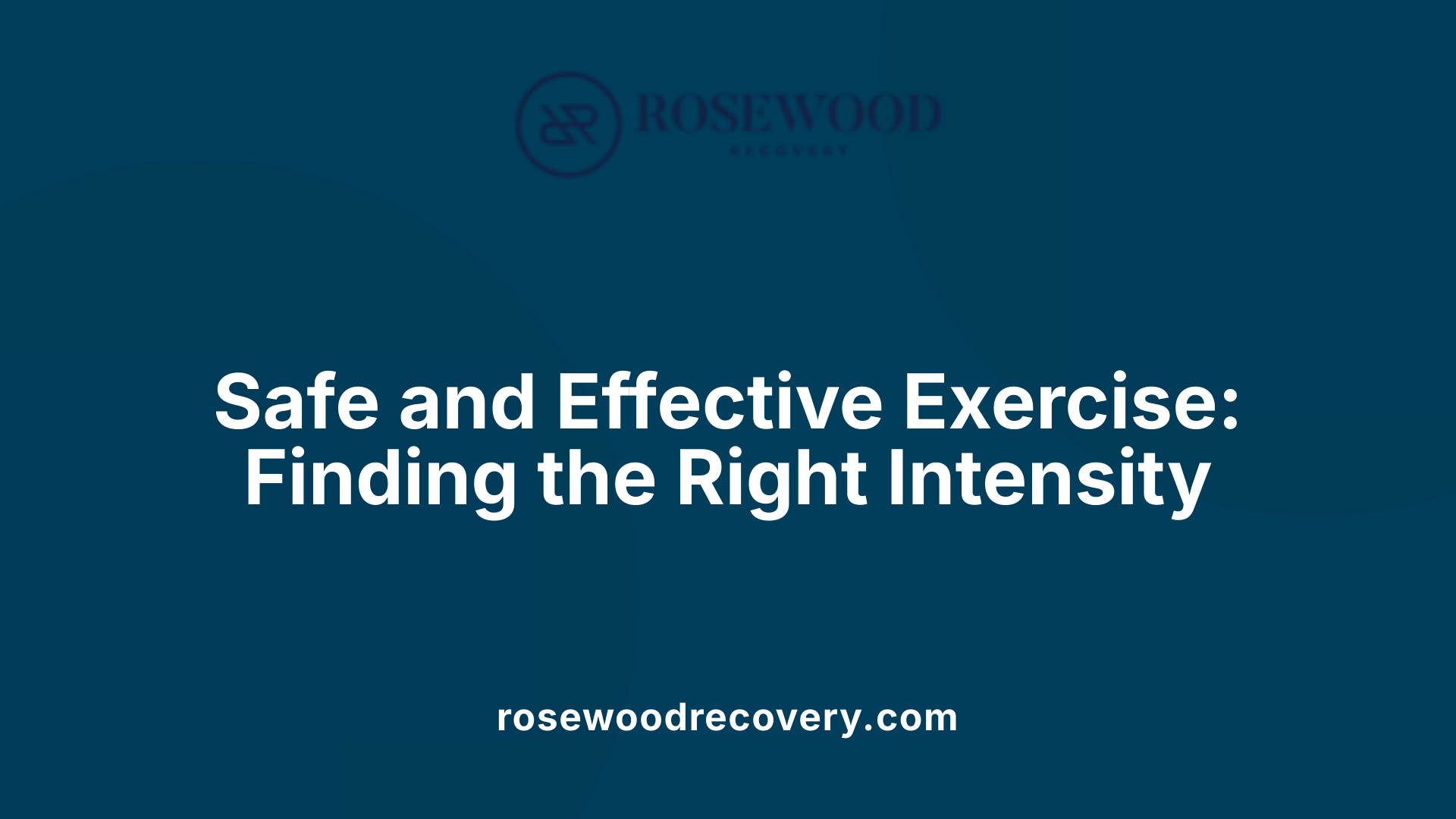
Why Is Low to Moderate Exercise Intensity Important?
Exercise programs designed for individuals in recovery from substance use disorders (SUD) work best when emphasizing low to moderate intensity activities. This approach helps ensure that participants can maintain consistent engagement without overwhelming their physical or psychological capacity. Low to moderate intensity helps reduce the risk of injury and burnout, creating a sustainable routine that fosters long-term adherence.
What Challenges Are Faced in Early Recovery?
During early stages of recovery, individuals often experience significant physical weakness, emotional distress, and psychological vulnerability. These factors make it more difficult to tolerate intense physical activity. Careful modulation of exercise intensity addresses these early challenges by providing manageable physical demands that support gradual rebuilding of strength and resilience. This empathetic pacing aids in maintaining motivation and prevents discouragement.
How Can Exercise Be Tailored to Individual Needs?
Every person’s recovery journey is unique, requiring personalized exercise plans that account for fitness level, current health, emotional state, and recovery progression. Tailoring exercises allows facilitators to maximize safety and optimize benefits while respecting individual preferences and limitations. Strategies include selecting appropriate activity types—such as walking, yoga, or light strength training—and adjusting duration and frequency according to capacities and recovery goals.
By focusing on appropriate exercise intensity levels, addressing early recovery hurdles, and customizing programs to individuals, exercise becomes a vital supportive tool in addiction recovery. This calibrated approach enhances physical and mental well-being and promotes sustained participation.
| Aspect | Description | Benefit |
|---|---|---|
| Low to moderate intensity | Exercise at manageable intensity to prevent overwhelm | Enhances adherence and reduces injury risk |
| Early recovery challenges | Physical and emotional vulnerabilities during initial sobriety | Allows gradual rebuilding and maintains motivation |
| Individual tailoring | Personalized exercise plans based on abilities, preferences, and recovery stage | Optimizes safety and maximizes therapeutic gain |
Leveraging Social and Cooperative Activities for Emotional Growth
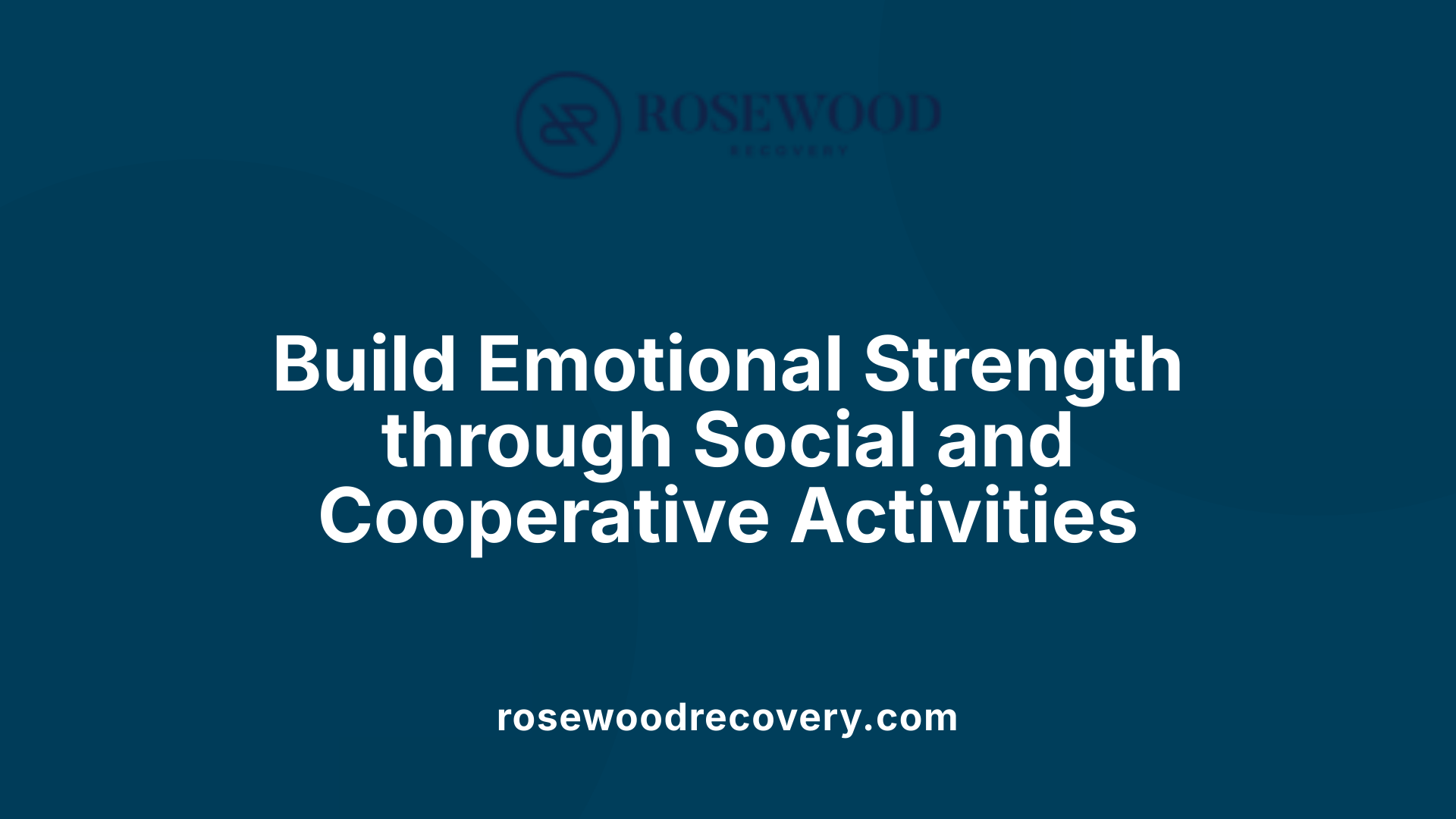
How Do Adventure Therapy and Cooperative Activities Support Emotional Recovery?
Adventure therapy incorporates outdoor and challenging experiences that immerse individuals in novel situations requiring problem-solving and trust-building. These activities enhance emotional healing by exposing participants to controlled risks and successes, fostering resilience and adaptability critical in addiction recovery.
Sports and other cooperative activities promote teamwork, communication, and shared goals. Engaging in these group settings helps recoverees rebuild social connections and practice interpersonal effectiveness, an essential skill for maintaining sobriety and emotional regulation.
In What Ways Do These Activities Build Self-Esteem and Confidence?
Participating in adventure and cooperative sports allows individuals to achieve tangible goals, reinforcing their sense of competence and self-worth. Overcoming physical and social challenges in these supportive environments nurtures confidence, which can generalize to other areas of life, including resisting substance use cues and managing emotional triggers.
How Do Social and Cooperative Activities Foster Life Skills Development?
These group experiences provide natural settings to develop essential life skills such as goal-setting, emotional regulation, problem-solving, and leadership. By navigating group dynamics and challenges, participants learn to pace their emotional responses, cooperate with others, and establish healthy routines—skills vital for long-term recovery and social reintegration.
Behavioral Activation: Reversing Depression and Anxiety Through Engagement
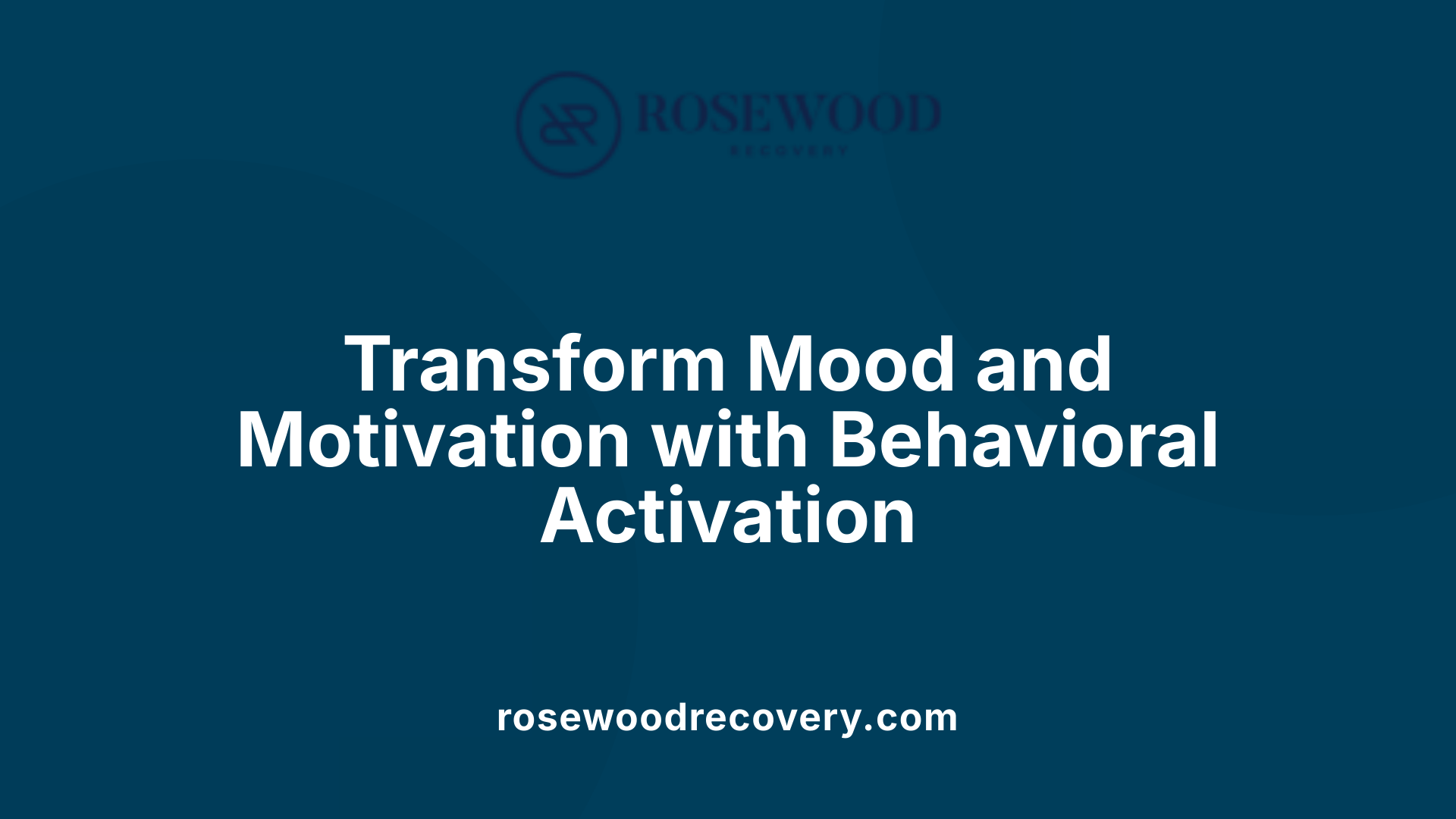
What is Behavioral Activation and How Does It Work?
Behavioral activation is a therapeutic approach focused on encouraging individuals to engage in activities that bring pleasure or a sense of accomplishment. This method helps disrupt the cycle of depression and anxiety by motivating participation in rewarding experiences.
How Do Exercise and Social Interaction Play a Role?
Incorporating exercise into daily routines boosts mood through the release of endorphins and other neurotransmitters. Similarly, social interactions provide emotional support and reduce feelings of isolation, which can worsen symptoms of depression and anxiety.
How Does Behavioral Activation Elevate Mood and Motivation?
By actively engaging in pleasurable activities, individuals experience positive reinforcement that counteracts negative thoughts and feelings. This process enhances motivation to continue participating in health-promoting behaviors, creating a beneficial upward spiral in emotional well-being.
Behavioral activation’s practical focus on activity helps people regain control over their lives and mental health through simple yet effective changes in behavior.
Supporting Emotional Regulation with Internet-Based and Co-Located Services
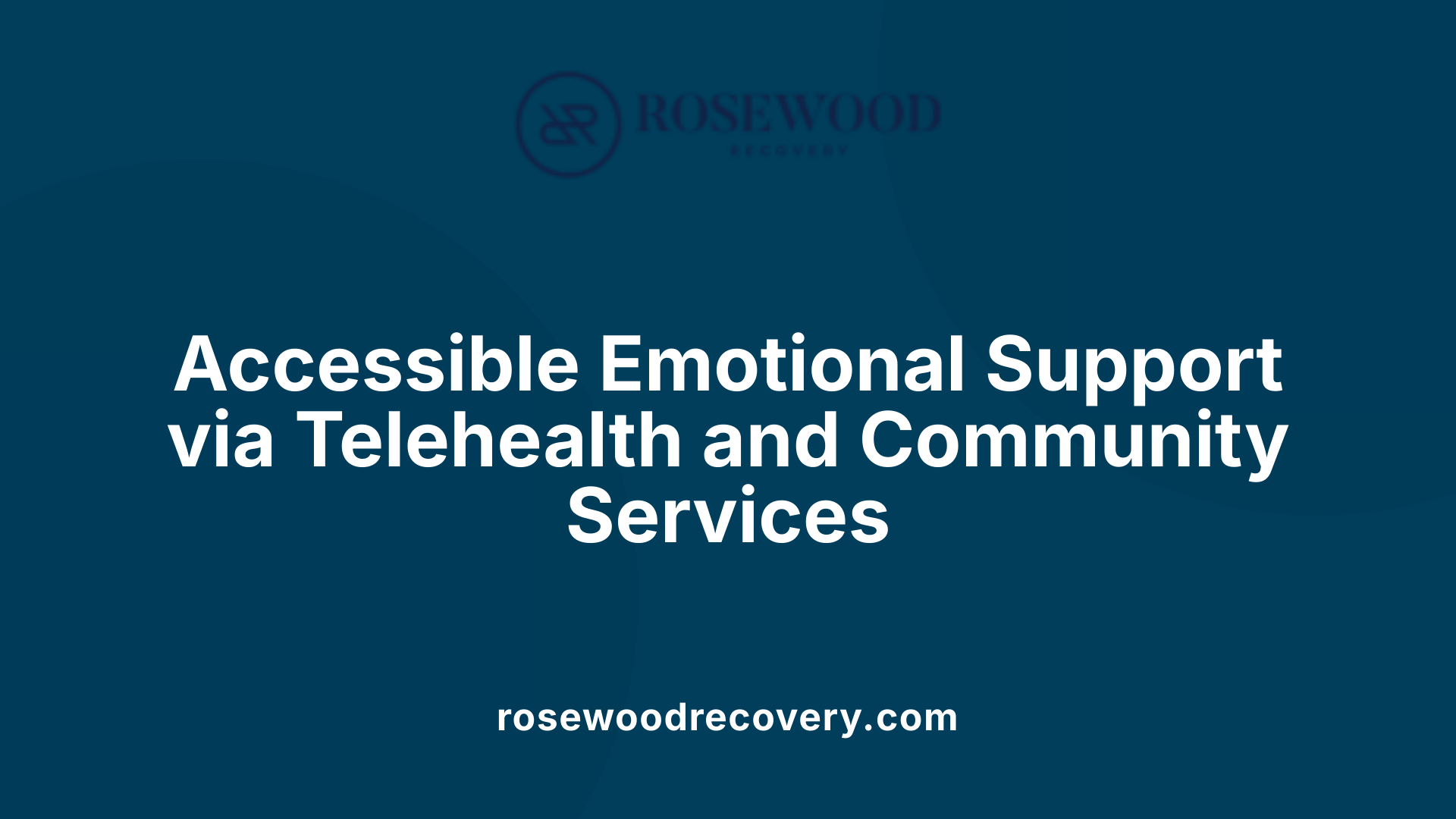
How do internet-based programs support emotional regulation?
Internet-based programs for Acceptance and Commitment Therapy (ACT) and Dialectical Behavior Therapy (DBT) offer accessible platforms for teaching emotional regulation skills. These programs allow individuals to engage in therapy remotely, providing flexible scheduling and reducing barriers such as transportation or stigma. Structured online modules often include mindfulness practices, distress tolerance techniques, and exercises to accept painful thoughts and emotions, helping users build psychological flexibility and cope with triggers.
What is the benefit of integrating mental health services within primary care?
Co-locating mental health services within primary care settings enhances accessibility and facilitates early intervention for emotional dysregulation. Patients can receive screening, support, and brief therapies during routine medical visits, promoting holistic care. This integration helps identify anxiety, depression, and substance use symptoms promptly, enabling timely referrals to specialized therapies like ACT and DBT. It also fosters collaboration between healthcare providers, ensuring comprehensive treatment.
How accessible are ACT and DBT programs through telehealth?
ACT and DBT programs delivered via telehealth have become increasingly accessible, especially during and after the expansion of digital health services. These teletherapy formats retain essential components such as skills training and experiential exercises. They can be tailored to individual needs and stages of recovery, providing continuous emotional support. Telehealth platforms often include interactive features that boost engagement and motivation, making these therapies practical tools for managing emotional regulation across diverse populations.
Relapse Prevention and Emotional Pacing: Developing Coping Skills
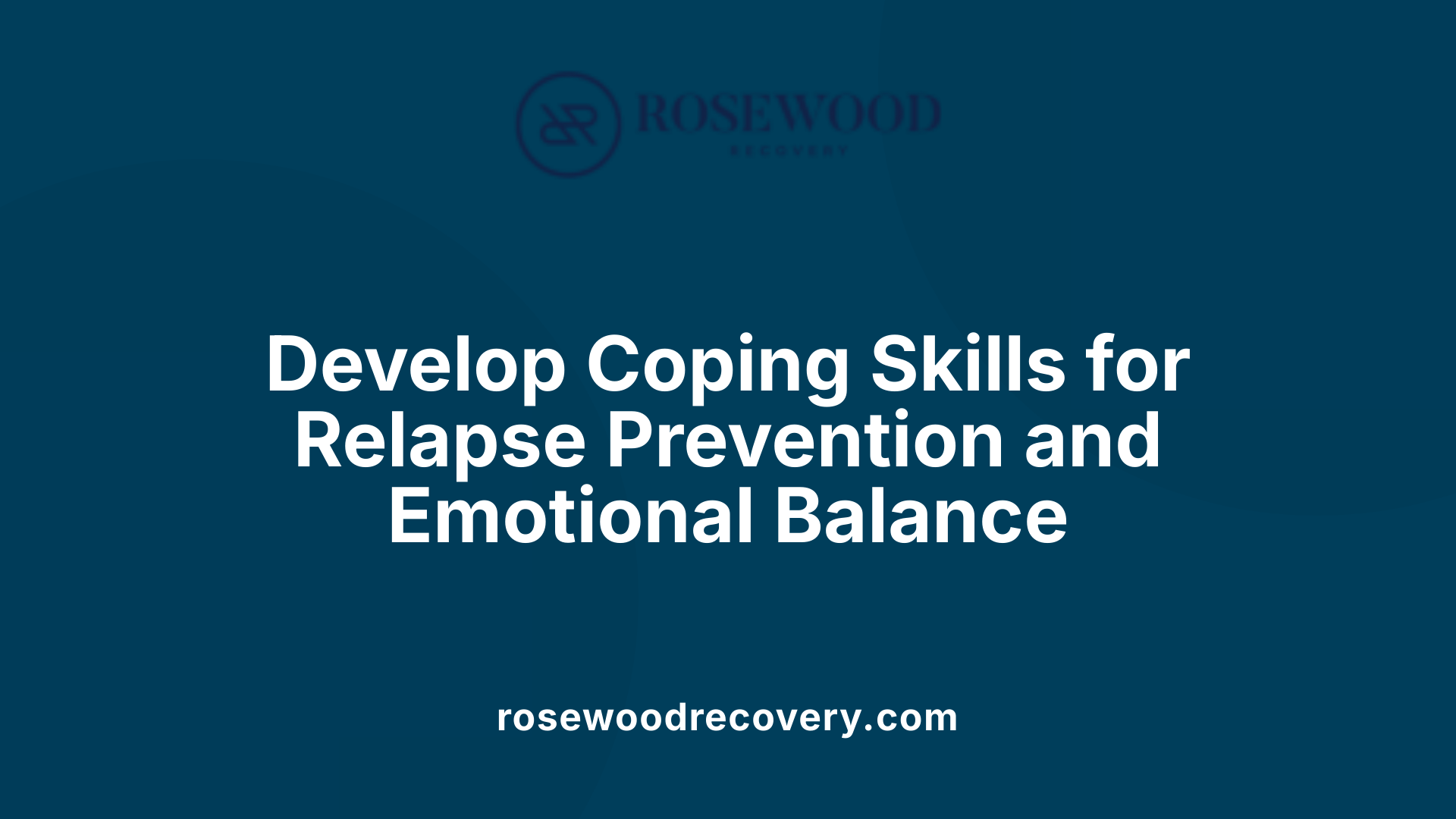
What is a skills-based cognitive-behavioral approach to relapse prevention?
Relapse prevention is a structured, skills-based cognitive-behavioral strategy designed to help individuals in recovery identify high-risk situations and develop effective coping mechanisms. This approach emphasizes recognizing thoughts, emotions, and behaviors that precede relapse, allowing individuals to intervene early and maintain control over their recovery journey.
How are triggers identified and managed in relapse prevention?
Effective relapse prevention includes systematically identifying triggers such as stress, anxiety, or emotional pain that may incite cravings or substance use. Once identified, individuals learn to manage these triggers through practical strategies like mindfulness, cognitive restructuring, and adaptive behavior changes. Techniques focus on breaking the cycle of emotional dysregulation that often leads to relapse.
Why is emotional regulation crucial for sustained recovery?
Emotional regulation supports sustained recovery by enabling individuals to manage intense emotions without resorting to substance use. Skills such as distress tolerance, mindfulness, and pacing—modulating stress and arousal levels to optimal zones—are essential. Proper emotional pacing ensures individuals maintain a productive balance, reducing the likelihood of being overwhelmed by stressors that can trigger relapse.
These interconnected elements form a comprehensive approach that equips individuals with the tools to not only avoid substance use but also to handle life's emotional challenges with resilience, thereby promoting long-term well-being in recovery.
Motivational Interviewing and Emotional Tone in Recovery
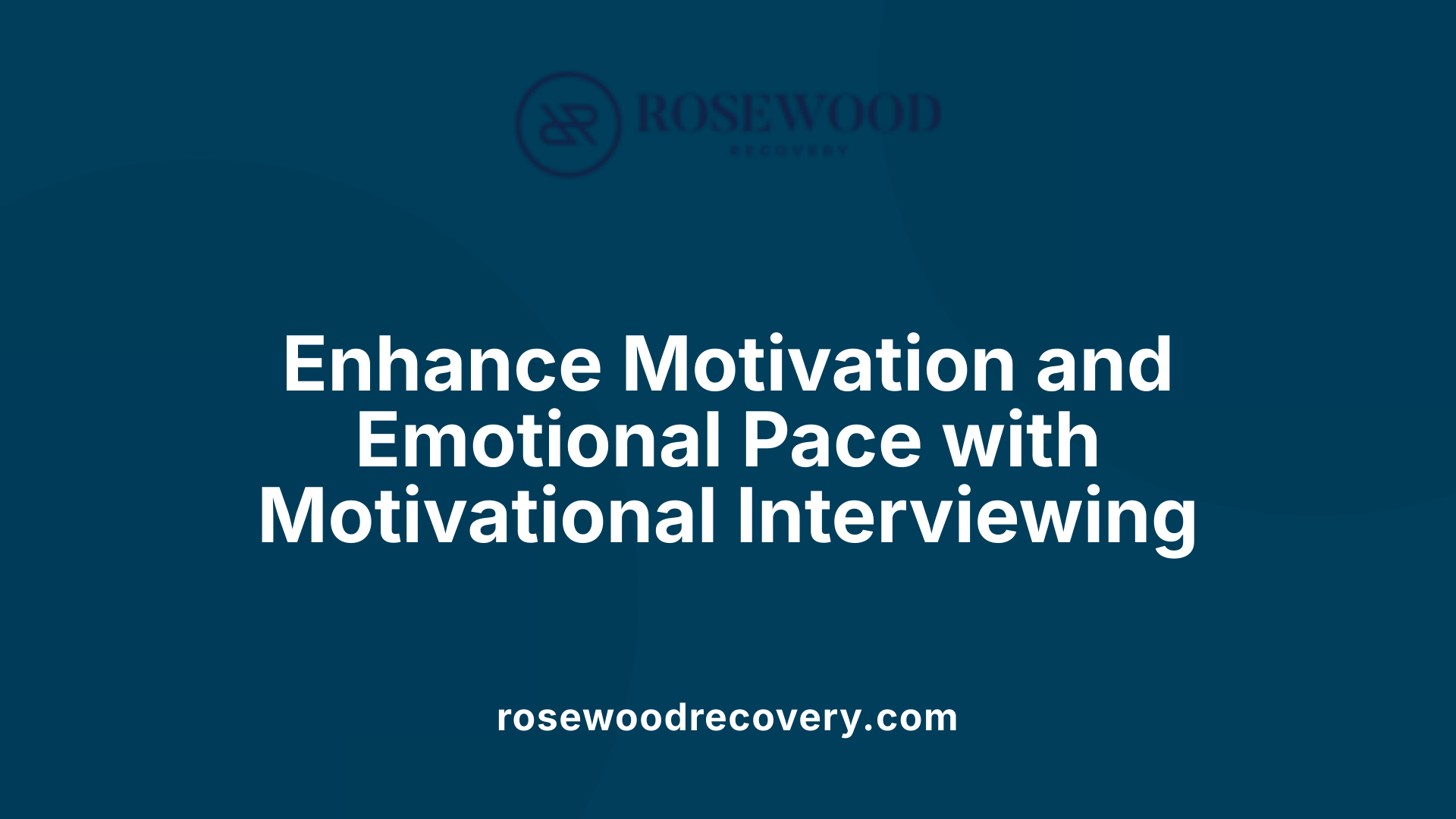
How Does Motivational Interviewing Enhance Motivation?
Motivational interviewing (MI) is a collaborative, patient-centered approach that boosts an individual's motivation to change. It works by exploring and resolving ambivalence, helping people identify their reasons for change. This process encourages patients to take an active role in their recovery, enhancing intrinsic motivation.
What Role Does Supportive Conversation Play in Motivational Interviewing?
A core component of MI is supportive conversation. Therapists use reflective listening, open-ended questions, and affirmations to create a non-judgmental environment. This empathetic dialogue builds trust and allows individuals to openly discuss their struggles with addiction, increasing their willingness to engage in treatment.
How Does Motivational Interviewing Help Set the Emotional Pace for Change?
MI helps establish an emotional rhythm that respects each person's readiness and pace. Instead of pushing for rapid change, it gently guides individuals through the emotional stages of recovery. This pacing helps avoid overwhelm and fosters sustainable behavioral shifts by aligning goals with personal values and emotional capacity.
By combining encouragement with empathy, motivational interviewing creates a foundation where emotional regulation becomes achievable, ultimately supporting long-term recovery success.
Family Therapy: Emotional Support and Pacing in the Recovery System
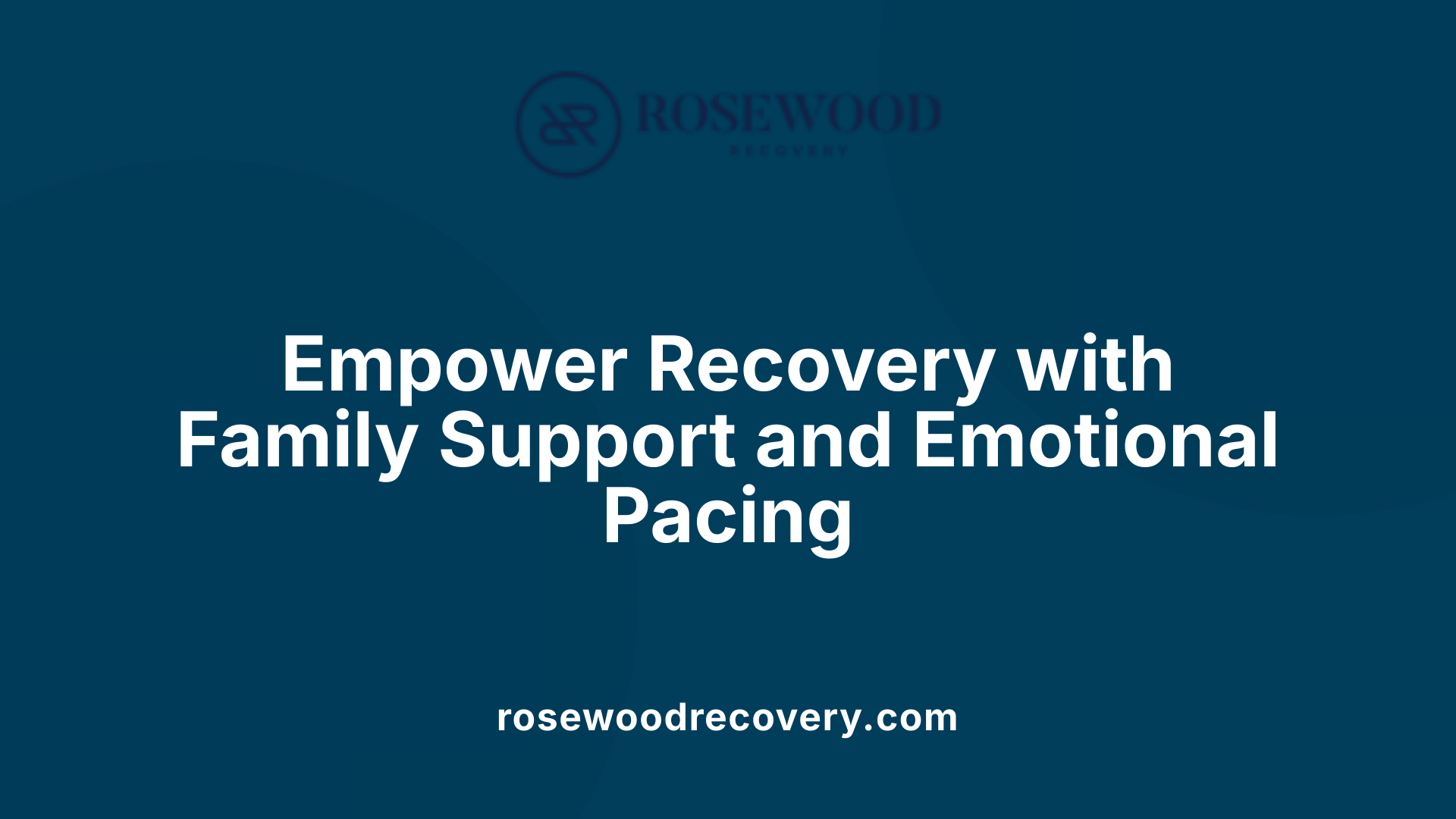
How does family involvement contribute to addiction recovery?
Family involvement serves as a crucial pillar in addiction recovery by creating a supportive environment that extends beyond the individual. Active participation from family members in therapy sessions fosters shared responsibility for recovery outcomes and amplifies emotional support structures.
What role does emotional support play within family therapy?
Emotional support dynamics within the family context involve recognizing and validating feelings related to addiction, reducing stigma, and creating safe spaces for honest communication. This support nurtures trust and helps manage stressors that might trigger relapse.
How does family therapy enhance understanding of addiction?
Family therapy educates members about the complexities of addiction, addressing misconceptions and promoting empathy. By deepening understanding, families can better respond to challenges, reinforce treatment goals, and encourage healthier interaction patterns.
How is emotional pacing maintained within the family?
Emotional pacing refers to regulating emotional intensity and timing in interactions. In therapy, families learn to recognize emotional triggers and manage responses constructively, fostering balanced communication that supports sustained recovery.
Family therapy integrates emotional support and pacing to build resilience in the recovery journey. By collaborating, families develop healthier coping skills that benefit both the individual and the broader family system.
Experiential and Trauma-Informed Therapies for Emotional Processing
How Do Art, Music, Equine, and Adventure Therapy Aid Emotional Processing?
Experiential therapies such as art, music, equine, and adventure therapy provide unique, non-verbal avenues for individuals to explore and express their emotions. These hands-on activities engage emotional processes that may be difficult to articulate verbally, fostering greater self-awareness and emotional regulation. For example, art and music therapy allow clients to visualize and externalize feelings, while equine therapy uses interactions with horses to build trust and emotional connection. Adventure therapy combines physical activity with therapeutic goals, promoting resilience and emotional healing through challenges.
What Role Does EMDR Play in Trauma-Related Distress?
Eye Movement Desensitization and Reprocessing (EMDR) is a trauma-informed therapy specifically designed to address distress caused by past traumatic experiences. EMDR facilitates the reprocessing of traumatic memories to decrease emotional intensity and helps individuals develop positive future actions. By targeting trauma-related distress, EMDR supports emotional regulation and pacing, helping clients break free from overwhelming emotional responses that hinder recovery.
How Do These Therapies Help in Processing Subconscious Emotions?
These experiential and trauma-informed therapies access subconscious emotions through creative expression and sensory experiences. They allow individuals to process feelings and memories that are often hidden or suppressed, making these emotions more manageable and less triggering. This deep emotional work aids in healing and developing healthier coping strategies, essential for effective emotional regulation.
Why Are Experiential and Trauma-Informed Approaches Important in Emotional Regulation?
Many individuals with emotional dysregulation and trauma struggle to verbalize their experiences. Experiential therapies bypass spoken language limitations, engaging emotions directly. Trauma-informed approaches recognize and respect clients' histories, ensuring safe and supportive environments for emotional exploration. Together, they create pathways for healing that traditional talk therapy alone may not achieve, enhancing overall emotional well-being and fostering recovery.
Cognitive-Behavioral and Dialectical Behavior Therapies: Structured Skill-building
How do CBT and DBT help in reshaping negative thoughts and improving emotional regulation?
Cognitive-Behavioral Therapy (CBT) focuses on identifying and challenging negative thoughts and beliefs that contribute to emotional distress and substance use. Through structured sessions, CBT helps individuals develop practical coping mechanisms, fostering improved emotional regulation and responsiveness. This reshaping of thought patterns supports healthier behavioral choices and reduces relapse risk.
What role do mindfulness and distress tolerance play in DBT?
Dialectical Behavior Therapy (DBT) emphasizes developing mindfulness skills, which cultivate present-moment awareness and non-judgmental observation of one's emotions. Distress tolerance techniques in DBT equip individuals to withstand intense emotional discomfort without resorting to maladaptive behaviors. These combined skills enable clients to manage overwhelming feelings effectively, promoting emotional pacing and resilience.
How does DBT enhance interpersonal effectiveness?
DBT teaches interpersonal effectiveness strategies to improve communication, assertiveness, and relationship management. These skills empower individuals to navigate social interactions more adaptively, reducing emotional conflicts that can trigger relapse. Enhanced interpersonal abilities contribute to building supportive social networks vital for sustained recovery.
What are emotional pacing techniques within these therapies?
Emotional pacing involves regulating the intensity and duration of emotional experiences to maintain balance. In CBT and DBT, pacing techniques include recognizing emotional triggers, breaking goals into attainable steps, and taking mindful breaks to prevent burnout. Such strategies help clients sustain engagement with therapy and daily activities by aligning emotional responses with their capacity, supporting overall mental well-being.
| Therapy Type | Core Focus Areas | Benefits for Emotional Regulation and Pacing |
|---|---|---|
| CBT | Restructuring negative thoughts, coping skills development | Improved cognitive clarity, reduced emotional distress |
| DBT | Mindfulness, distress tolerance, interpersonal effectiveness | Enhanced emotional control, better relationship skills |
Together, CBT and DBT provide comprehensive skill-building frameworks that help individuals manage emotions effectively, build healthy relationships, and pace their emotional experiences during recovery.
Expressive Arts Therapy: Fostering Creative Emotional Expression
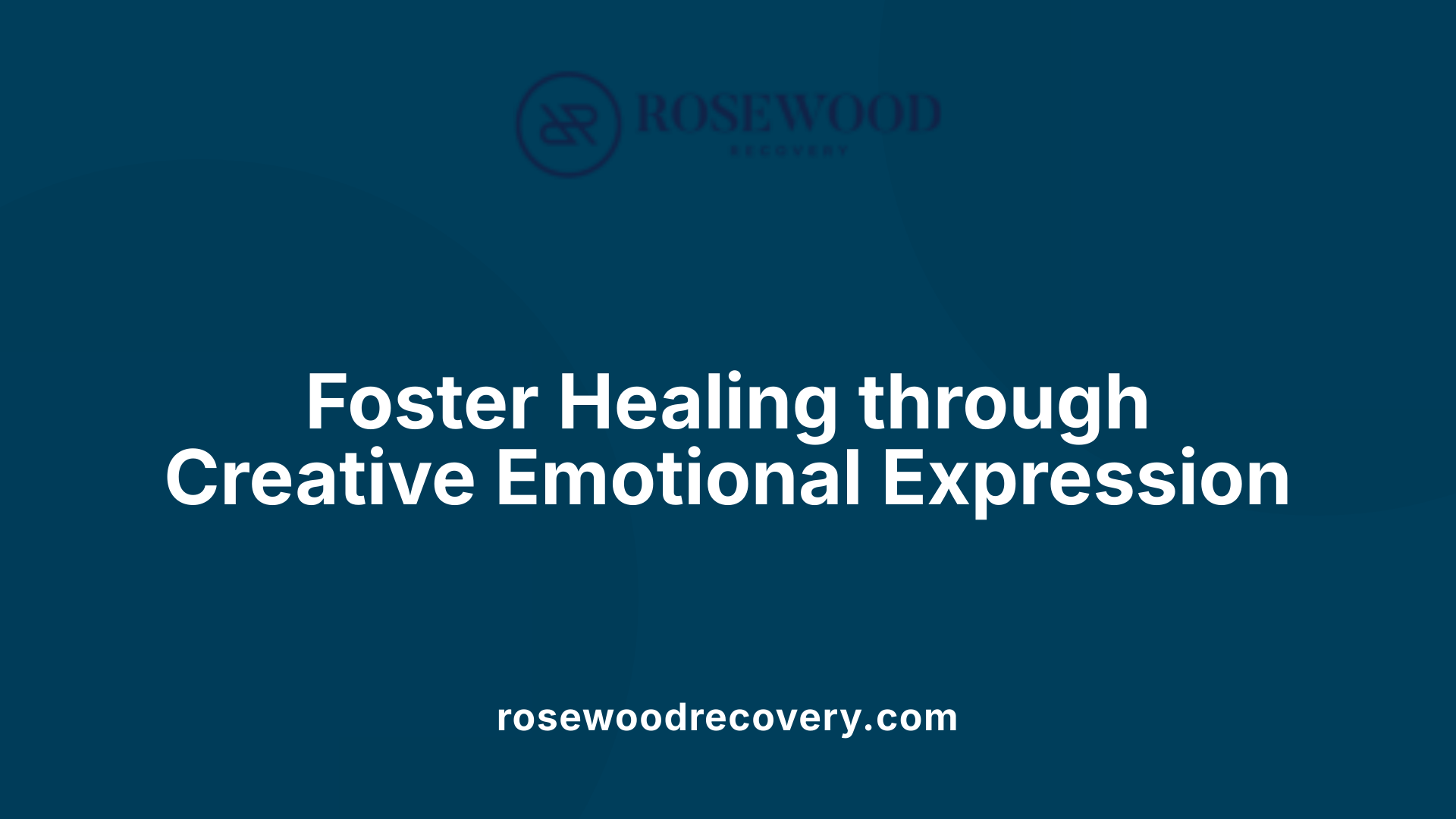
How does expressive arts therapy enhance self-awareness through art?
Expressive arts therapy engages individuals in creative activities such as painting, music, dance, and drama. These outlets allow clients to explore and express emotions that may be difficult to articulate verbally. By externalizing feelings through artistic creation, individuals gain deeper insight into their emotional experiences and patterns, enhancing self-awareness.
What are the emotional regulation benefits of expressive arts therapy?
Through the process of artistic expression, clients can safely process challenging emotions and reduce emotional dysregulation. The creative process fosters mindfulness and helps in managing impulses and mood swings by providing a nonverbal way to release and reframe emotions. This contributes to healthier coping strategies, which are essential in addiction recovery and mental health management.
How does expressive arts therapy support personal growth in therapy?
Participation in expressive arts therapy encourages personal reflection and emotional exploration, promoting growth beyond traditional talk therapy. It nurtures resilience, emotional flexibility, and empowerment by allowing individuals to experiment with new ways of expressing and understanding themselves. This process supports long-term recovery by building emotional strength and self-efficacy.
Expressive arts therapy thus acts as a powerful complement to other therapeutic approaches, creating a holistic environment for healing, emotional regulation, and growth.
Embracing Emotional Pacing for Lasting Recovery
Emotional pacing emerges as a vital component in the treatment of substance abuse, mental health disorders, and addiction. By integrating structured therapeutic approaches such as ACT, DBT, CBT, and experiential therapies with mindfulness practices and physical activity, individuals can develop robust emotional regulation skills. These skills enable them to cope with stressors and triggers effectively, reducing relapse risk and promoting sustained well-being. The strategic management of stress and arousal, guided by pacing principles and supported by comprehensive treatment services, creates a balanced framework that empowers patients to navigate the complexities of recovery. Ultimately, emotional pacing fosters psychological flexibility, enhances quality of life, and nurtures the personal growth necessary for long-term success.
References
- The Importance of Emotional Regulation in Mental Health
- Enhancing Substance Use Disorder Recovery through ...
- Emotional Regulation in Addiction Treatment at Antrim, NH
- Mastering the Art of Pacing for Health and Longevity
- Treatment Methods & Evidence-Based Practices
- Mental health & substance use disorders - Medicare
More Articles
Recovery Begins Here
Click below to get in touch and schedule a consult call with our team to begin your journey towards happiness and freedom.
Rosewood Recovery does not discrimate against any person because of the race, color, religious creed, ancestry, age, sex, sexual orientation, gender identity, national origin, handicap or disability or the use of a guide or support animal because of the blindness, deafness or physical handicap.





